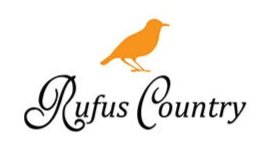Vegetable tanning vs Chromium tanning
Leather is a material that has been used for centuries in the manufacturing of shoes, bags, belts, and other products. There are different types of leather, and one of the primary distinctions is between vegetable-tanned leather and chromium-tanned leather. In recent years, there has been a growing interest in vegetable-tanned leather due to its various benefits over chromium-tanned leather. In this blog post, we will explore some of the advantages of vegetable-tanned leather.
First, let's define the two types of leather. Chromium-tanned leather is made by using chromium sulfate, a toxic chemical that has a negative impact on the environment. This method is cheaper and faster than vegetable tanning, which is a more traditional and natural process. Vegetable tanned leather is made by using natural tannins found in plants, such as chestnut, mimosa, or quebracho. The process is slower, and the leather has a more organic and natural appearance.
Eco-Friendly
One of the primary benefits of vegetable-tanned leather is its eco-friendliness. Chromium-tanned leather is created using harmful chemicals that pollute the environment and pose health hazards for workers in the tanneries. The chemicals used in the tanning process can also leach into the water supply and cause harm to aquatic life. In contrast, vegetable tanning is a natural process that does not involve the use of toxic chemicals, making it a more environmentally friendly option.
Durability
Vegetable-tanned leather is known for its durability and longevity. The tanning process involves soaking the leather in a bath of natural tannins, which penetrate the fibers of the leather and make it stronger. This process also makes the leather more resistant to water and other types of damage. The natural tannins in vegetable-tanned leather also give it a unique patina over time, making it even more beautiful and distinctive.
Healthier for workers
The chemicals used in the tanning process of chromium leather are not only harmful to the environment but also to the workers in the tanneries. Workers in the tanning industry are often exposed to dangerous chemicals that can cause long-term health problems. In contrast, vegetable-tanning is a more natural and less hazardous process, making it safer for workers in the tanneries.
Better quality
Vegetable-tanned leather is of better quality than chromium-tanned leather. The natural tanning process results in a denser leather that is more robust, long-lasting, and more resistant to wear and tear. Vegetable-tanned leather is also more flexible and breathable than its chromium counterpart. Moreover, vegetable tanning allows for the preservation of the leather's natural grain, which gives it a more unique and authentic look.
Versatility
Vegetable-tanned leather is a versatile material that can be used in a wide range of products. It is commonly used in shoes, belts, bags, and wallets, among others. The natural tanning process also makes it possible to achieve different finishes, from a smooth and polished look to a rugged and distressed appearance.
In conclusion, vegetable-tanned leather offers numerous benefits over chromium-tanned leather. It is eco-friendly, durable, healthier for workers, of better quality, and more versatile. Choosing vegetable-tanned leather over chromium-tanned leather is not only better for the environment but also for your health and well-being. If you are looking for a high-quality and sustainable material for your leather products, vegetable-tanned leather is the way to go.
